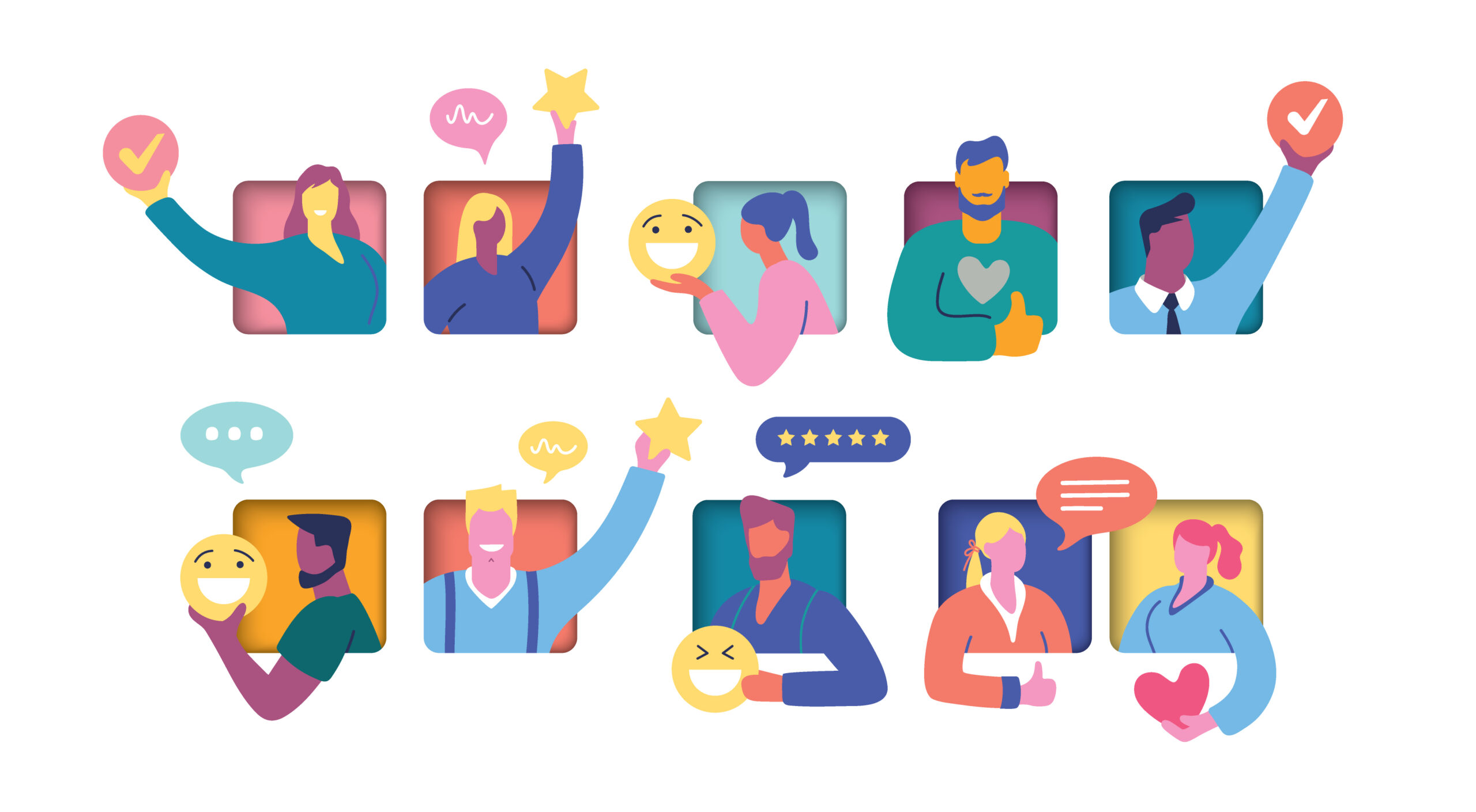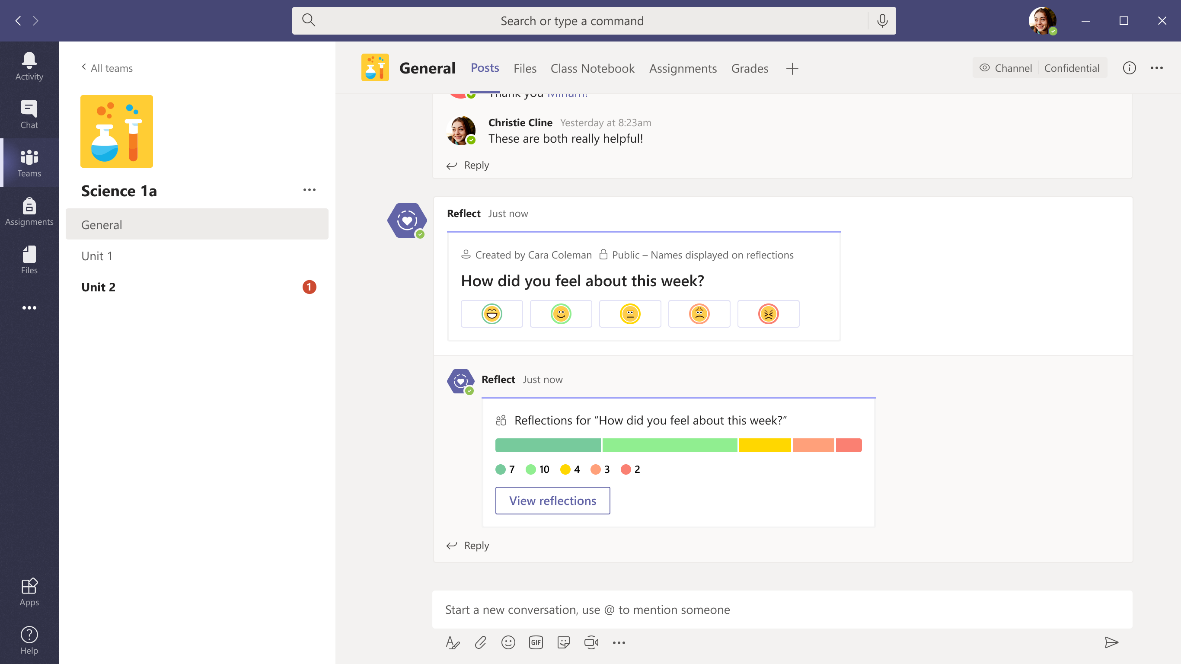By Michele McDanel (opens in new tab)

What makes some classrooms and work contexts more motivating and productive than others? Research shows that people’s ability and creativity are amplified (opens in new tab)in working and learning environments that are emotionally supportive. (We define emotionally supportive environments as ones in which people feel heard, valued, safe, and included.)
Yet group leaders (e.g., meeting leaders, managers, educators) often struggle to collect information about the emotional state of group members—the very information that is helpful for understanding how to support their groups’ engagement, productivity, collaboration, well-being, and intra-group relationships.
The current climate of extended distance learning isn’t helping matters, either. The lack of social connection that comes with not sharing a physical space with others is contributing to students feeling unhappy and less motivated to complete their schoolwork.
The value of social and emotional learning (SEL)
“Emotions are the gatekeeper of cognition, motivation, and attention; everyone benefits when attention is given to social and emotional development,” said Mark Sparvell, Director, Product Marketing Manager for Windows Education Marketing. “When we develop our emotional vocabulary, we become more productive, more contributive, and happier as we gain ability to express and address our emotions.”
The question of how to lever technology to support social-emotional learning approaches has been one that Sparvell has been curious about for years. The academic and societal benefits are clear: students involved in some form of SEL see an 11 percent increase in graduating from college, according to a CASEL analysis (opens in new tab). They also graduate high school at higher rates and are less likely to become involved in crimes or have substance abuse problems.
Developing impactful tools
Social and emotional abilities are in high demand (opens in new tab), while there is a low supply of those skills and tools globally. Since 1980, jobs requiring social/emotional intelligence have increased. Due to the subtle nature of this skillset, these kinds of jobs will not be replaced by artificial intelligence. Teachers have said that they want to do more to impart these skills and lessons (opens in new tab), but struggle with lack of time and resources.
The Education team knew that there was a real need to provide better tools in this space, and it all seemed to come together during the Hackathon in 2017 when a group of team members began tackling the problem.
“We said, ‘We spend all our time thinking about building tools for admins, IT, and educators. What would happen if we put the student at the center of the experience? Would it result in better outcomes for students?” remembered Darren Austin, Reflect General Product Manager.
They didn’t stop there. They knew it was important to anchor the project on what matters most to teachers and educators; providing students with what they need to be ready for life, to contribute to society, and to be happy. This ties directly to Microsoft’s mission: to empower every person and every organization on the planet to achieve more.
The team began by talking with hundreds of students around the world to find out what they wanted in SEL tools. The first version fell flat with the students so the team regrouped, and conducted a collaborative design process with students. This time, they let them design the experience they wanted. Repeated iterations led to the Reflect tool that’s now being released within Teams.
“When social and emotional learning features are embedded in what we use every day, that’s when you have more impact. This provides the ability to use an existing tool as part of learning, not added onto learning. Teams is also already social by design,” said Sparvell.
What is Reflect?
Reflect is a new messaging extension for Microsoft Teams that supports communication about emotions. Think of it as a poll, or maybe even an emoji story, focusing on information about a students’ emotional state and learning readiness. With one click of the mouse, a teacher can see how a student is feeling.
Nelson Rozo, design researcher who worked on Reflect, explained, “It’s a simple tool, but we made it as streamlined as possible to fit teacher scenarios.”

Reflect allows students to choose an icon that corresponds with how they are feeling
Reflect aligns with the latest research and best practices for social-emotional learning, organizational psychology, and emotionally supportive environments. It includes a list of suggested check-in questions and offers the ability to create custom questions for checking in with students or colleagues. Check-ins can be set so responses are public, private to the sender, or fully anonymous. These settings accommodate those who might not be comfortable sharing in a public discussion.
Available as a chat extension for channel discussion, in group and meeting chats, and during one-on-one chats, Reflect is free with an M365 or Azure account. Creating a tool that was equitable, and accessible to all, was a priority, said Rozo. “Because SEL is such an important skill, if it weren’t free, that’s a problem because students would miss out on the opportunity,” he said.
It’s also open-source so anyone can adapt it to their needs or build upon it, such as adding reporting features.
Outside of the classroom, Reflect can also be used in business settings. Any team that wants to monitor their social-emotional states now can. “Even though we started this work for the education space, and the need is there, we wanted to make sure it scaled to corporate and other business scenarios, as well,” said Rozo.
Early feedback from educators has been positive. Teachers say that the new Teams feature is making them look forward to the new school year even more. Their new ability to gauge how students are faring emotionally will make a big difference in remote learning.
More Resources
Professional development resources for educators interested in using check-ins with their students are available at: https://aka.ms/checking-in-with-students (opens in new tab) and https://aka.ms/remote-wellbeing (opens in new tab).
IT Admins can find Reflect on GitHub (opens in new tab) along with a detailed walk-through of the app and a step-by-step guide for adding it to their tenant. We recommend beginning with the Architecture and Solution Overview (opens in new tab) and Scenario Walk-Thrus (opens in new tab) to read about what the app does and how it works. When you’re ready to try out Reflect or to use it in your own organization, follow the steps in the Deployment guide.
Do you use Reflect in your classroom or at your business? If so, how has it changed your relationship with your students or colleagues? Tweet us your thoughts @MicrosoftRI (opens in new tab) or follow us on Facebook (opens in new tab) and join the conversation.
Michele McDanel is a builder, an organizer, and a storyteller with a bachelor’s degree in Communications and an MBA. Michele is energized by solving problems and meeting business needs through communications and customer experience solutions that raise the bar. She enjoys building relationships and managing teams. Overall, she likes figuring out what the “special sauce” is that will be the competitive differentiator for a business and its solutions. Michele joined the Customer Insights Research team in 2019 to amplify the great UX research and data science work they do, and to showcase the thought leadership of the team across internal and external communications, events, and social media.

